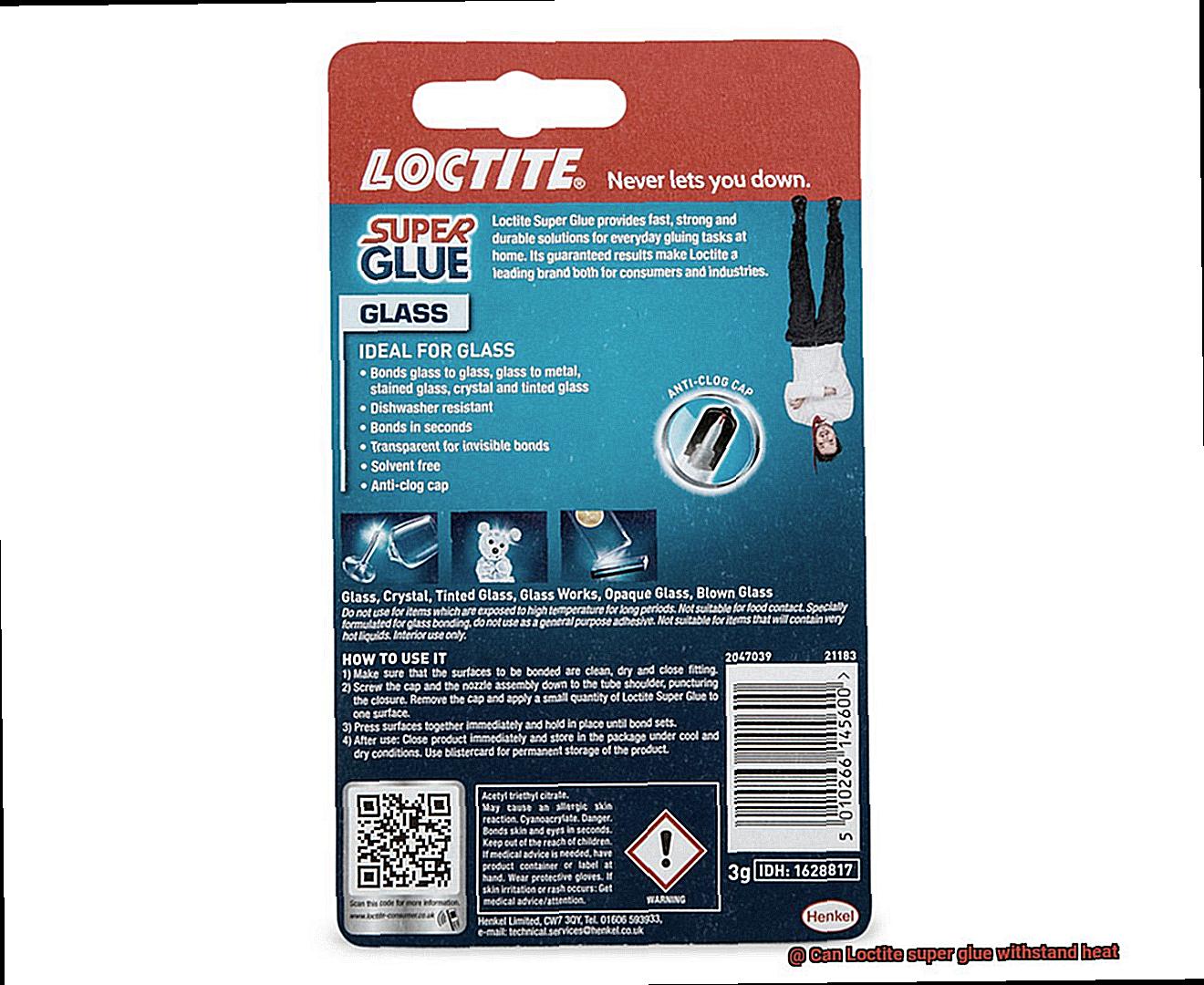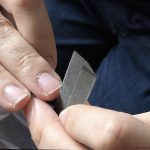Loctite Super Glue has earned its reputation as a reliable adhesive for all sorts of bonding needs. It’s tough, it’s durable, but what happens when things get hot? Can this super glue handle high temperatures?
In this blog post, we’re diving deep into the heat-resistance capabilities of Loctite Super Glue. We’ll explore how it performs under extreme heat conditions and help you decide if it’s the right choice for your projects.
Why should you care about this topic? Well, if you’re a DIY enthusiast who loves tinkering with heat-exposed objects or an industrial pro in need of a reliable adhesive for high-temperature applications, knowing the truth about Loctite Super Glue’s heat resistance is essential.
So, stick around as we uncover the secrets behind this adhesive’s thermal reliability. We’ll examine its composition, performance, and practical implications when faced with different levels of heat exposure. Get ready to separate fact from fiction and choose the perfect adhesive for your next scorching-hot project.
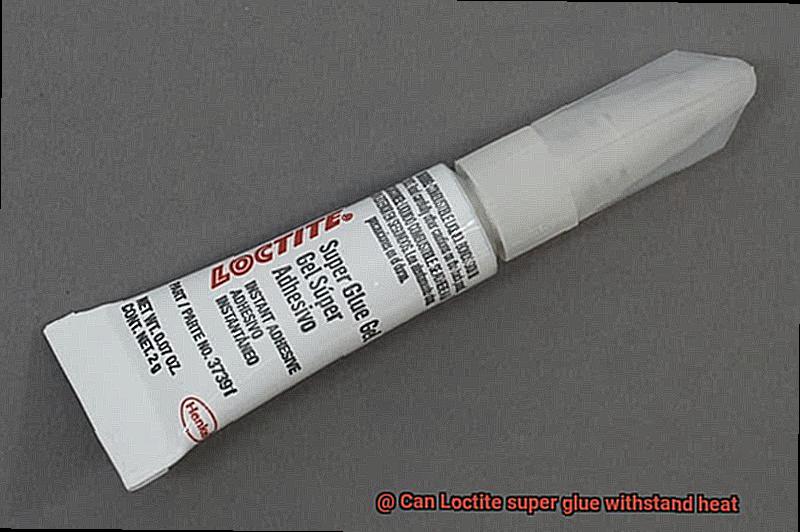
What is Loctite Super Glue?
Contents
- 1 What is Loctite Super Glue?
- 2 How Does Heat Affect Loctite Super Glue?
- 3 Factors to Consider When Bonding Materials with Loctite Super Glue
- 4 Heat Resistance of Different Types of Loctite Super Glue Products
- 5 Specialty Adhesives for High Temperature Applications
- 6 Proper Surface Preparation and Application Techniques for Optimal Bond Strength
- 7 Conclusion
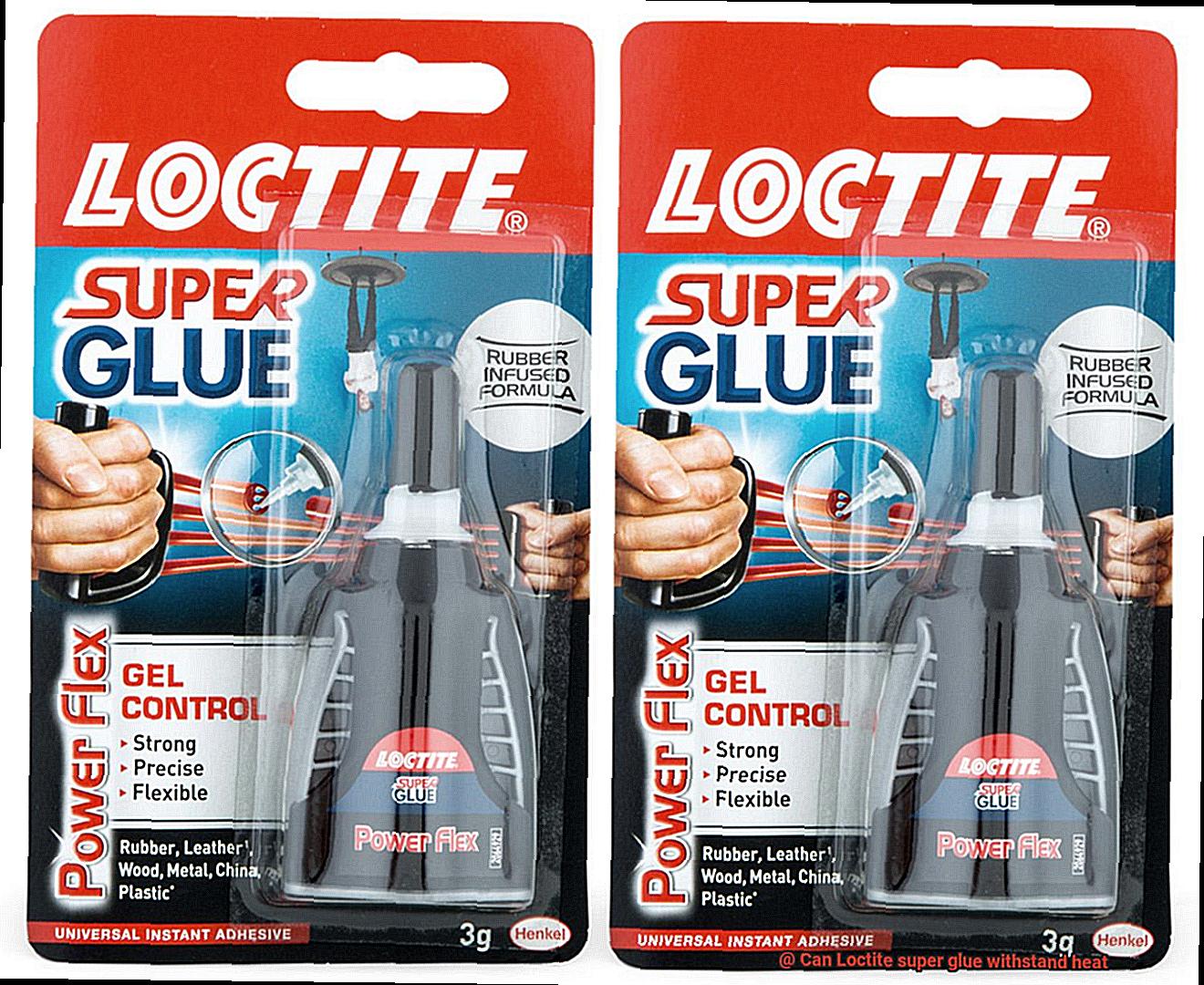
Loctite Super Glue is a powerhouse adhesive renowned for its ability to create quick and robust bonds across a wide range of materials and applications. In this article, we’ll explore the features, advantages, and common uses of this popular adhesive, uncovering its versatility and strength.
Features and Advantages:
- Lightning-Fast Drying: Loctite Super Glue sets within seconds, eliminating the need for clamps or extended drying time. This rapid bonding feature makes it ideal for small repair jobs or projects where time is of the essence.
- Unyielding Strength: This adhesive excels at bonding diverse materials such as metal, plastic, rubber, ceramics, and more. Whether you’re fixing broken household items, repairing jewelry, or assembling small parts, Loctite Super Glue delivers a reliable and durable bond that withstands the test of time.
- Waterproof Resilience: Loctite Super Glue forms a waterproof bond, making it the perfect adhesive for wet or humid environments. Its ability to resist moisture ensures optimal performance in outdoor applications or when bonding items that come into contact with water.
- Flexibility at Its Core: While Loctite Super Glue creates a rigid bond, it also possesses remarkable flexibility. It can endure some degree of movement and vibration without cracking or breaking, making it ideal for applications where slight flexibility is desired.
Common Uses:
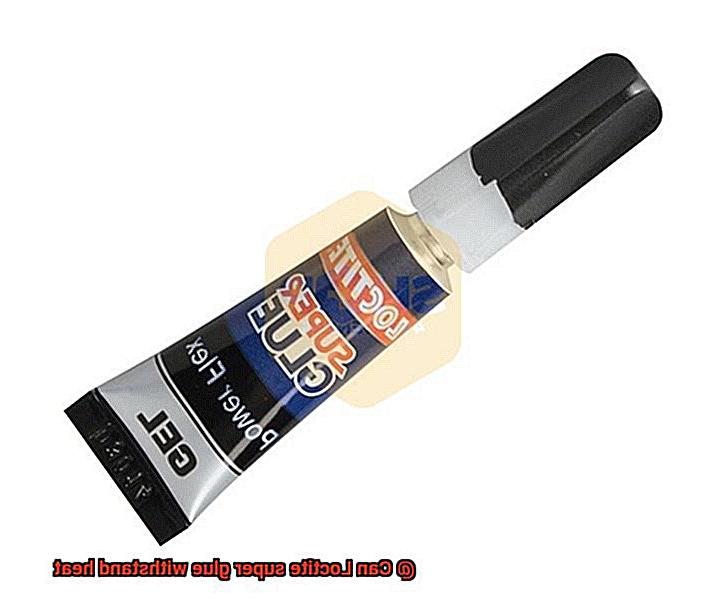
- Household Repairs: Loctite Super Glue is a go-to solution for fixing broken ceramic items, plastic parts, or reattaching metal components in your home.
- DIY Projects: From crafting to model building, this adhesive provides a reliable bonding solution for various materials commonly used in DIY projects.
- Jewelry Repair: Its exceptional bonding capability makes Loctite Super Glue an excellent choice for repairing earrings, necklaces, and bracelets.
- Small Assembly Work: Whether you’re working on electronics or intricate models, Loctite Super Glue ensures secure bonding of small parts, even in high-stress areas.
- Automotive Applications: This adhesive can be used for minor automotive repairs, such as fixing loose trim or reattaching interior components.
How Does Heat Affect Loctite Super Glue?
In the realm of adhesive bonding, heat can be a mighty adversary. And when it comes to our beloved Loctite Super Glue, it’s no different. So let’s delve into the fiery world of heat and see how it affects this super glue sensation.
To begin, it’s crucial to understand that heat can indeed have an impact on Loctite Super Glue. The specific type of Loctite and the temperature it encounters determine whether it will soften or melt, ultimately compromising its bonding prowess. After all, no one wants their carefully crafted masterpiece to crumble under the pressure of a little heat.
The heat resistance of Loctite Super Glue varies depending on its formulation. Generally, most types can withstand temperatures ranging from approximately 180°F (82°C) to 220°F (104°C). Not too shabby, right? However, it’s important to remember that other factors can influence the glue’s resilience, such as the thickness of the adhesive layer, the materials being bonded, and the duration of exposure to heat.
Thin layers of Loctite Super Glue sandwiched between metal surfaces and subjected to prolonged high temperatures are particularly susceptible. The adhesive may lose its strength and integrity, potentially leading to catastrophic failure. We wouldn’t want your project going up in flames due to a little heat.
To ensure success when facing scorching conditions, it’s best to stay within the specified heat resistance range and consider specialized high-temperature resistant adhesives for extreme heat applications. Remember, Loctite Super Glue may be a superhero in the adhesive universe, but even superheroes have their limitations when it comes to heat resistance.
Factors to Consider When Bonding Materials with Loctite Super Glue
When it comes to bonding materials with Loctite Super Glue, there are several crucial factors that should be taken into consideration. Whether you’re facing extreme heat or working with delicate materials, understanding these factors will ensure a successful and durable bond. In this article, we will explore the key considerations when using Loctite Super Glue, providing you with the knowledge you need to achieve the best results.
Factor 1: Material Compatibility
Just as superheroes have unique abilities, different materials have varying levels of heat resistance. Ensuring that the adhesive strength of Loctite Super Glue matches the material’s ability to withstand heat is essential. For heat-sensitive materials like plastics or rubber, it is advisable to choose a low-temperature resistant variant of Loctite Super Glue.
Factor 2: Temperature Range
Loctite Super Glue is designed to withstand specific temperature ranges. Going beyond these limits can compromise its integrity. It is crucial to check the product specifications or consult with a Loctite representative to ensure that the glue can handle the heat your bonded materials will be exposed to.
Factor 3: Surface Preparation
Just like superheroes need a clean slate before facing a challenge, proper surface preparation is vital for a strong bond. Thoroughly cleaning and drying the surfaces before applying Loctite Super Glue is essential. Any contaminants or moisture present on the surfaces can weaken the adhesive bond and affect its heat resistance. Additionally, roughening or etching the surfaces can improve adhesion and enhance the bond’s ability to withstand heat.
Factor 4: Application Technique
Precision is key when applying Loctite Super Glue, just like a superhero’s aim. Following the manufacturer’s instructions and applying a thin and even layer of glue will yield the best results. Applying too much or too little adhesive can impact the bond’s strength and its ability to endure high temperatures.
Factor 5: Curing Time
Even superheroes need time to recharge, and Loctite Super Glue requires sufficient curing time to reach its maximum strength. Rushing the process by subjecting the bond to heat prematurely can result in a weaker bond that may not withstand high temperatures.
Heat Resistance of Different Types of Loctite Super Glue Products
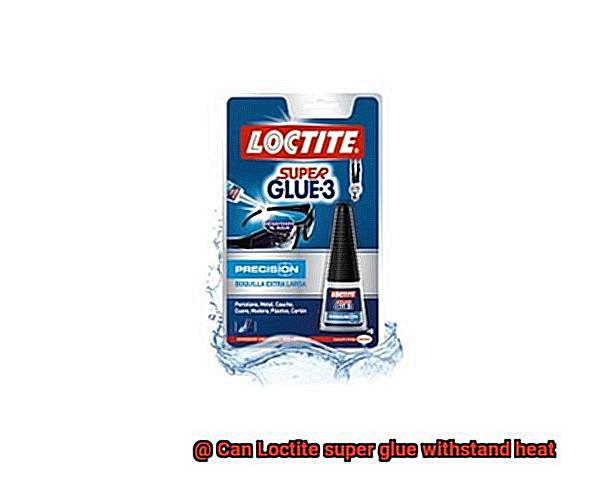
Today, we delve into the fascinating world of Loctite super glue products and their ability to withstand high temperatures. Get ready to explore the different types of Loctite super glue and witness their resilience when the heat is on.
Unleash the Power: Not All Super Glues Are Created Equal
Did you know that not all super glues can handle the heat? It’s a fact. Loctite offers a wide range of super glue products, each with its own unique formula and abilities. Some are superheroes, fearlessly braving scorching temperatures, while others may falter under extreme heat.
The Heat-Defying Titans: Loctite Ultra Gel Control Super Glue
When it comes to taking on the heat, Loctite Ultra Gel Control Super Glue shines like a true superstar. With its extraordinary powers, it can withstand temperatures up to a blistering 200 degrees Fahrenheit (93 degrees Celsius). That’s hotter than a sizzling summer day.
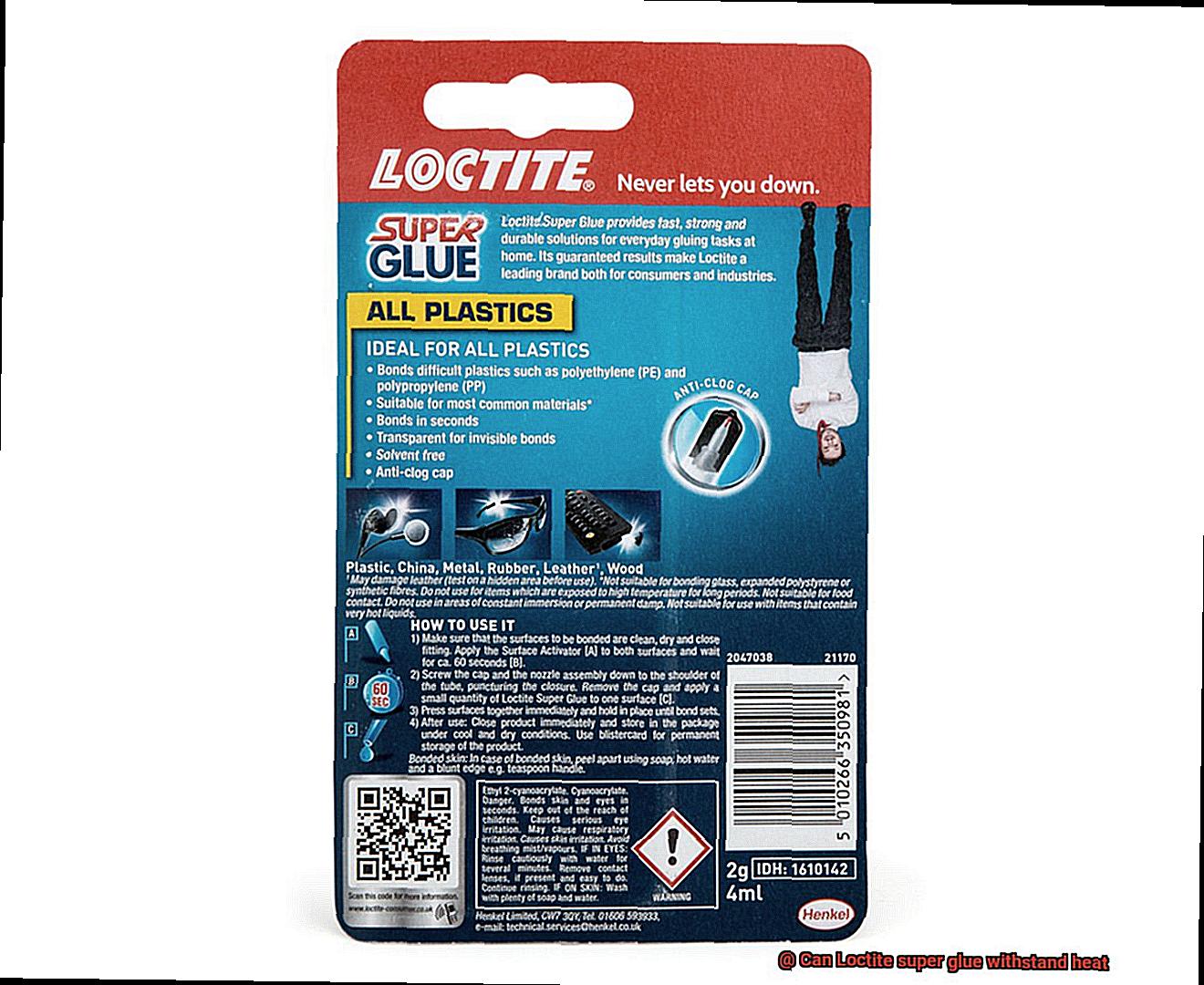
The Hotshots of Super Glue: Loctite Professional Liquid Super Glue
If you’re in need of even greater heat resistance, look no further than Loctite Professional Liquid Super Glue. This mighty adhesive can conquer temperatures up to a scorching 300 degrees Fahrenheit (149 degrees Celsius). Now that’s what I call super strength.
A Word of Caution: Even Heroes Have Their Limits
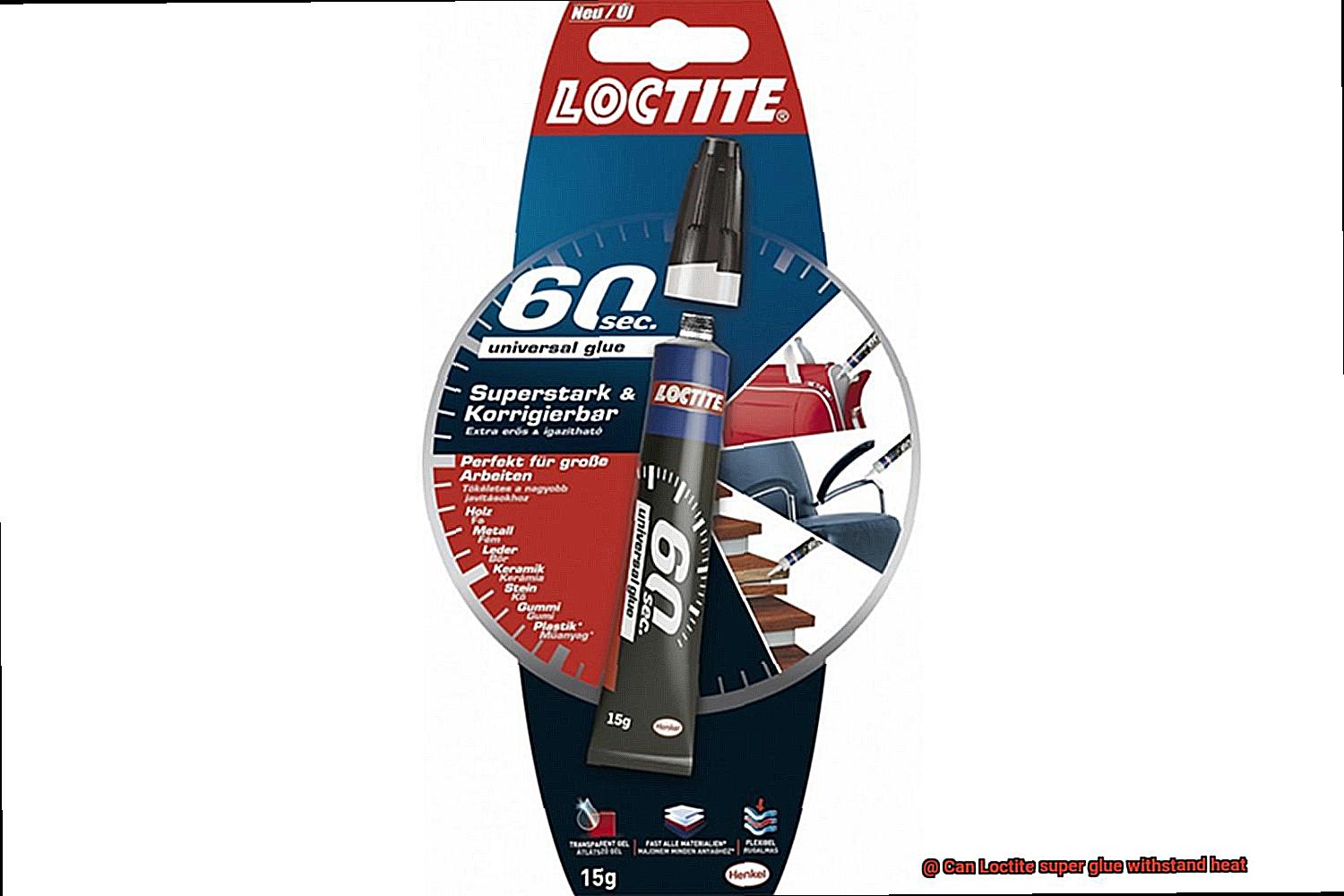
While these heat-resistant super glues are tough cookies, they do have their limits. Prolonged exposure to high temperatures can still wear them down over time. So, it’s essential not to push these heroes beyond their capabilities.
Guidelines for Success: Your Super Glue Sidekick
Remember, every hero needs a trusty sidekick, and in this case, it’s the manufacturer’s instructions and guidelines. Always follow them to ensure you achieve the best results with your heat-resistant super glue. They will guide you through the bonding process and unleash the full potential of your super glue.
Specialty Adhesives for High Temperature Applications
Specialty adhesives for high temperature applications are specifically designed to withstand extreme heat and provide reliable bonding solutions for demanding jobs. When it comes to heat resistance, standard super glues just won’t cut it. That’s where specialty adhesives come into play, and one of the leading brands in the adhesive industry, Loctite, has got you covered.
Loctite offers a range of specialty adhesives that are formulated to handle high temperatures. These adhesives are designed to withstand extreme heat and provide exceptional performance in even the toughest conditions. Whether you’re working on automotive repairs or industrial applications, Loctite has the right adhesive for your needs.
One standout product from Loctite is their 271 High Strength Threadlocker. This adhesive is perfect for locking and sealing threaded fasteners in automotive and industrial settings. It can handle temperatures up to a scorching 450°F (232°C) and provides excellent resistance to vibration, ensuring a secure and reliable bond.
If you’re in need of a cylindrical bonding solution, look no further than Loctite’s 638 Retaining Compound. This adhesive forms a high-strength bond between metal surfaces and can handle temperatures up to 400°F (204°C). It’s commonly used for securing bearings, bushings, and shafts in demanding applications where heat resistance is crucial.
For those truly extreme heat requirements, Loctite offers the 620 Retaining Compound. This adhesive can withstand temperatures up to a blistering 450°F (232°C) and provides exceptional chemical resistance. It’s ideal for heavy equipment assembly where both heat and harsh chemicals are present.
However, it’s important to note that while these specialty adhesives are designed to withstand high temperatures, their performance can be affected by factors such as temperature, pressure, and chemical compatibility. Factors like duration of exposure, load-bearing capacity, and surface preparation can all impact the adhesive’s ability to withstand heat.
To ensure the best results, it’s crucial to carefully follow the manufacturer’s instructions when using specialty adhesives for high temperature applications. Proper surface cleaning, adequate curing time, and specific handling requirements are all essential for optimal performance.
Proper Surface Preparation and Application Techniques for Optimal Bond Strength
When it comes to achieving optimal bond strength, proper surface preparation and application techniques are the secret ingredients to success with Loctite super glue. This powerful adhesive has the potential to create unbreakable bonds between various materials, but only if the surfaces are prepared correctly. In this article, we will delve into the key steps for successful bonding with Loctite super glue, including surface cleaning, adhesive selection, and application techniques.
Step 1: The Magic of Cleanliness
Before diving into the world of bonding, ensure that the surfaces to be joined are clean and free from any contaminants. Dirt, oil, or residue can act as barriers to adhesion, weakening the bond strength. To tackle this issue head-on, use a mild detergent or solvent recommended by Loctite to gently cleanse the surfaces. Employ a soft brush or cloth for effective scrubbing. Once clean, rinse thoroughly with water and allow them to air dry completely.
Step 2: Roughen Up Smooth Surfaces
Smooth or non-porous materials like glass or metal present a unique challenge for achieving optimal bond strength. These slick surfaces need a little roughening up to enhance adhesion. Grab some sandpaper or a wire brush and get to work creating tiny grooves or etching the surface. This increases the available surface area for bonding, allowing Loctite super glue to seep in and create an unbreakable bond.
Step 3: Select the Perfect Adhesive
Loctite offers a diverse range of super glues tailored for different applications. When choosing an adhesive, consider factors such as temperature resistance, gap-filling ability, and flexibility. If your project requires high heat resistance, look for Loctite products specifically formulated for extreme temperatures.
Step 4: Masterful Application
Now it’s time to put your adhesive to work. Carefully follow the manufacturer’s instructions for the specific Loctite super glue product you are using. Apply a thin, even layer of adhesive to one of the surfaces being bonded. Resist the temptation to go overboard with the glue, as excessive adhesive can result in weak bonds. And remember, don’t touch the adhesive with bare hands unless you want an unintended bond with your skin.
Step 5: Press and Align with Authority
Once the adhesive is applied, it’s time to bring the surfaces together. Act swiftly and press them firmly, ensuring proper alignment. Apply sufficient pressure for a few seconds to allow the adhesive to spread evenly and create a bond that can withstand anything life throws its way. Loctite super glue sets rapidly, so be sure to work efficiently.
Also Read: Is Super Glue Heat Resistant? (Quick Guide)
Conclusion
In conclusion, Loctite Super Glue proves its mettle when faced with high temperatures, but its ability to withstand heat depends on the specific formulation and adhesive type. Most types of Loctite Super Glue can handle temperatures ranging from approximately 180°F (82°C) to 220°F (104°C), exhibiting a resilience that is nothing short of impressive.
However, it’s important to bear in mind that thin layers of Loctite Super Glue wedged between metal surfaces and exposed to prolonged high temperatures are more prone to losing their strength and integrity. To ensure a bond that stands the test of time, it is crucial to adhere strictly to the specified heat resistance range and contemplate specialized high-temperature resistant adhesives for extreme heat applications.
Loctite doesn’t leave you hanging when it comes to tackling scorching conditions. The brand offers specialty adhesives specifically crafted for high-temperature tasks. These exceptional products can endure even higher temperatures than standard super glues. For instance, Loctite Ultra Gel Control Super Glue flaunts an impressive capacity of handling temperatures up to 200°F (93°C), while Loctite Professional Liquid Super Glue fearlessly braves the heat up to 300°F (149°C).
To unlock the full potential of Loctite super glue’s bond strength, meticulous surface preparation and application techniques are paramount. Surfaces must be pristine, free from contaminants that could compromise the adhesive’s effectiveness. In some cases, smooth surfaces may require a bit of roughening up for optimal adhesion. Additionally, selecting the right adhesive for your specific needs and diligently following the manufacturer’s instructions will ensure a successful outcome.
In summary, while Loctite Super Glue boasts remarkable heat resistance capabilities within its designated range, exercising prudence by choosing an adhesive tailored to your project’s demands is always wise. When confronted with extreme temperatures, trust in specialized high-temperature resistant adhesives to be your steadfast allies.

